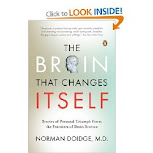IQads publishes an interesting interview with Ed Cotton who will be speaking at Idea Forum. For all those interested here's the English version
IQads: What's the latest trend in strategic planning in US these days?
EC: Agencies are trying hard to redefine and re-frame their planning function due to changes in the marketing environment. They are grappling with the role of interactive and how Planning needs to function. In addition, there's also the challenge of integrating Media and Account Planning. Overall, there's a lot to think about.
IQads: What's the strategic idea for "ZIG, ZAG, ZUG", the Mini Clubman launch campaign?
EC: The MINI Clubman is a unique car. It's design takes the iconic elements of MINI and twists and subverts them to create an entirely new entity. Our strategy was based around the idea of uniqueness and difference, that all MINI's are unique, but this one pushes the concept to the edge. The tag line we use is "The Other MINI".
IQads: What was the most impressive use of media in the "Zig, Zag, Zug" campaign?
EC: We did a unique deal with the New Yorker magazine to have a triple page fold out on the front cover of the travel issue. This meant we could show on consequetive pages, the executions, Zig, Zag and Zug.
IQads: Why did You choose the webisodes solution for the 2007 Mini Cooper viral campaign, "Hammer and Coop"?
EC: We saw the emergence of online video as an affordable solution for our client. We didn't have a sufficient budget to launch the new MINI on television so we did it online. The webisodes also allowed us to generate more content that could highlight all the new features of the new car, this is something that could never be achieved in a conventional 30 second spot.
IQads: What was the seeding strategy for "Hammer and Coop"?
EC: We custom created lists of people who we thought would be interested in the content; from the obvious MINI fan groups to the more obscure lovers of 70s car action shows. In addition, we also allowed MySpace users to place the webisodes on their home pages. This had a significant impact on traffic.
IQads: My Starbucks Idea vs. twitter.zappos.com: which one do you think is more promising for a valuable and useful conversation about the brand?
EC: I think they are both good and important. Brands using Twitter appears to be a good solution that can allows them to react to conversations. If they see something going wrong or issues for concern they can sweep in and make a contribution to change or add to conversation. MyStarbucks is a little different, it's more of a proactive outreach campaign to solicit powerful ideas from their customers. Overall, both are good and important, but they serve different needs.
IQads: Could any type of corporation take the risc of allowing their employees to tweet (officially), like Zappos did?
I think its potentially dangerous for large corporations. To let everyone loose on Twitter would be madness. I think Zappos is a pretty small company and it's therefore easier to control. There's an inbuilt ethos of customer service that helps and probably some kind of self-policing. Large corporations need to be careful who they allow on and this should be driven by the marketing and PR folks.
IQads: Would You briefly describe a campaign using social media that impressed You this year?
EC: The most interesting campaign in the past year, please note that I changed the question, is the Gorilla from Cadbury, created by Fallon in London. Obviously, it cleaned up at the awards shows this year and has been the fashionable choice. However, I think it's an important landmark in the development on television advertising because it understand that entertainment and participation are key drivers for breakthrough. Great ideas are always about the fusing of two independent thoughts to create something new. The drumming Gorilla and the Phil Collins track was just the right mix of strangeness to get people to pay attention. In addition, the agency cleverly seeded different music versions of the film and encouraged consumers to do their own. The campaign seemed to create it's own momentum with a huge level of media interest and coverage in the UK. The important thing here is that this took a lot of effort on behalf of agency creative and planners to convince the client to take such a huge gamble. This ad went through extensive research before it aired. Millward Brown told the client that the ad worked, but they couldn't explain why!! Of course, the most important thing are results and apparently this advertising helped Cadbury grow its business in the UK.
communication is essential to business making and it involves more than the ability to name your product, write a tag line or a press release. It's an intricate, rational and scalable effort and, let's face it, not anyone can do it.
6/05/2008
Subscribe to:
Post Comments (Atom)














2 comments:
Hi: I think Millward Brown has responded to this at some point Here and in the comments section below that same post (Charles Firth and Nigel Hollis). Or at least it was a spirited discussion from very smart people!!
@duey, some interesting stuff there but somehow it seems like the MB guy is simply taking the theoretical POV and I have seen my shares of Link fail to buy it so easily
Post a Comment